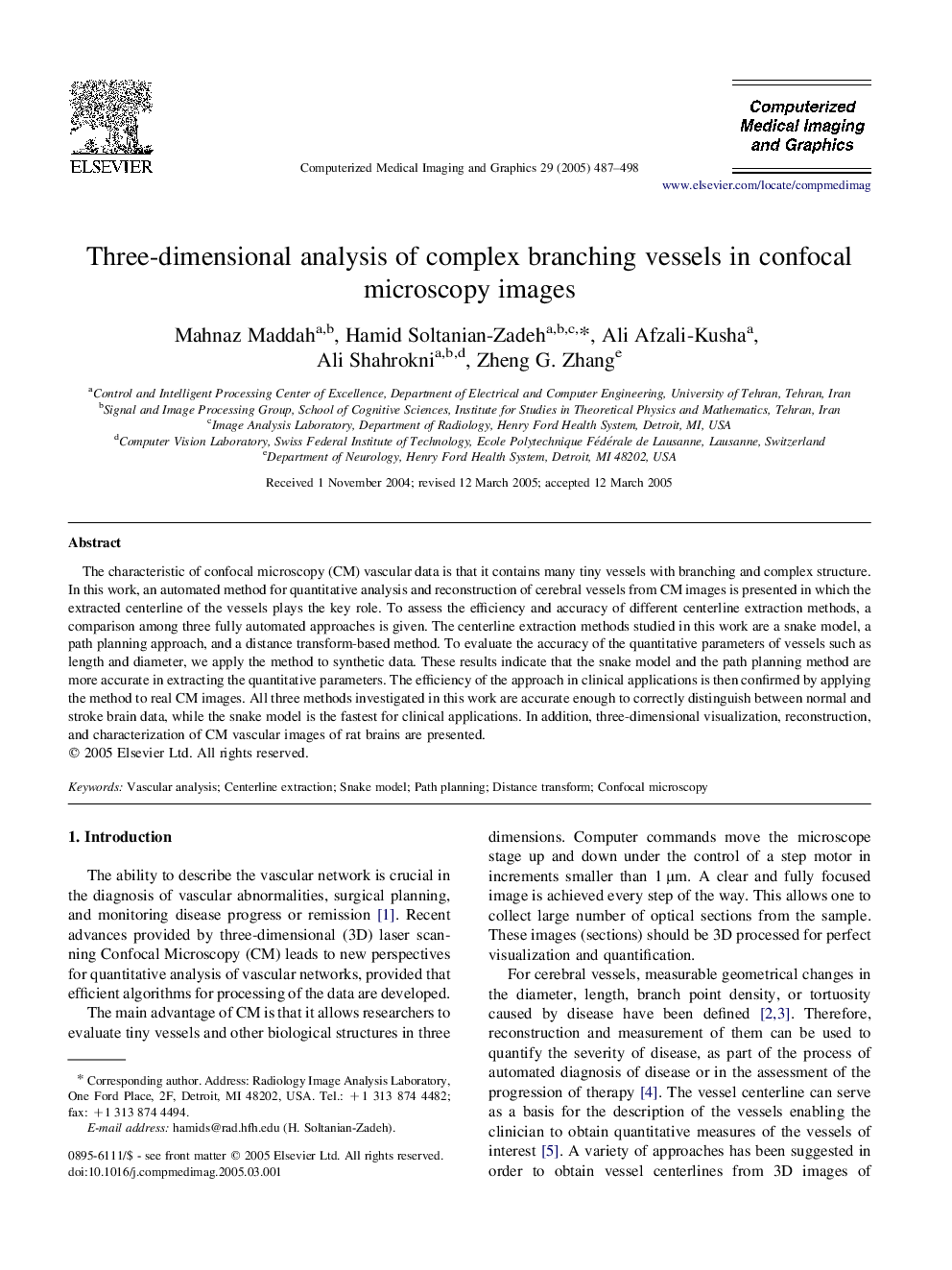| Article ID | Journal | Published Year | Pages | File Type |
|---|---|---|---|---|
| 10351218 | Computerized Medical Imaging and Graphics | 2005 | 12 Pages |
Abstract
The characteristic of confocal microscopy (CM) vascular data is that it contains many tiny vessels with branching and complex structure. In this work, an automated method for quantitative analysis and reconstruction of cerebral vessels from CM images is presented in which the extracted centerline of the vessels plays the key role. To assess the efficiency and accuracy of different centerline extraction methods, a comparison among three fully automated approaches is given. The centerline extraction methods studied in this work are a snake model, a path planning approach, and a distance transform-based method. To evaluate the accuracy of the quantitative parameters of vessels such as length and diameter, we apply the method to synthetic data. These results indicate that the snake model and the path planning method are more accurate in extracting the quantitative parameters. The efficiency of the approach in clinical applications is then confirmed by applying the method to real CM images. All three methods investigated in this work are accurate enough to correctly distinguish between normal and stroke brain data, while the snake model is the fastest for clinical applications. In addition, three-dimensional visualization, reconstruction, and characterization of CM vascular images of rat brains are presented.
Related Topics
Physical Sciences and Engineering
Computer Science
Computer Science Applications
Authors
Mahnaz Maddah, Hamid Soltanian-Zadeh, Ali Afzali-Kusha, Ali Shahrokni, Zheng G. Zhang,
